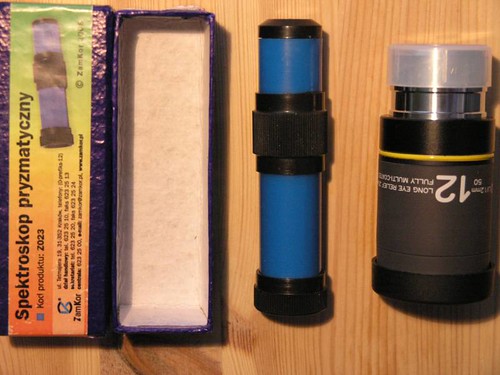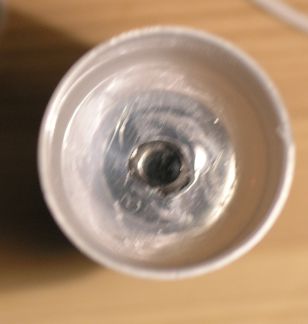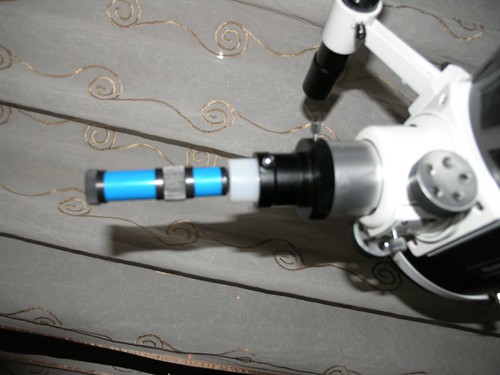Prism spectroscope and some astronomy fun
I bought prism spectroscope in on-line shop zamkor.pl, which sells various shool aids (if you want something like this search for hand held spectroscope, they are sold by may companies). It's a simple construction made from 3 prism, which allows observing the spectrum in line with the light source. Plastic (or metal) housing ends with one side with a slit that passes very narrow line of light on to the prisms. On the other side last prism displays the spectrum. Ring on the spectroscope allows setting perfect focus. This construction is called also as double Amici prism (more on: Wikipedia, ioannis.virtualcomposer2000.com).
Observations
Such spectroscope is good for viewing spectrum of light bulbs, or Fraunhofer lines in solar spectrum. If we want to get a spectrum of distant objects like street lights or some space objects we need a telescope that will gather more light and focus it in the focuser, where the spectroscope can receive it and split it. As the housing is smaller than 1,25" I had to make 1,25" nose for the spectroscope - using old photographic film plastic container. I made a hole in the center of the container and glued the spectroscope "entrance" to that container. The spectroscope was ready to mount it in the telescope: After mounting the spectroscope I pointed the telescope on one of local street lights, and got nice sharp and bright spectrim of high pressure sodium lamp: If you have a filter wheel, or something else for changing filters you can compare efficiency of cutting city lights (on a street lamp) or overall characteristic using sunlight pointing the telescope on bright sky (not on the sun directly, or close to it!).Spectrum photography
As my spectroscope isn't made in any common for photography/astronomy size I could only take pictures with DSLR hand held by the prism. As this is very close object you camera may not catch perfect focus. To solve this try manual focus setting in macro range (30-5cm).
Slit based simple spectroscope isn't good for small light sources like star of nebula - as you have to keep the star light on the slit, and make longer exposure photo as the light is faint. For such objects diffraction grating is much better (or spectroscope without a slit). You can put a circle shape diffraction grating on a simple filter (that doesn't cut VIS spectrum in any way), or use grating based Star Analyser.




Comment article